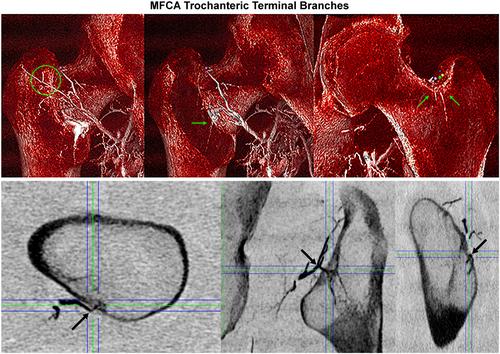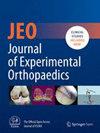Few studies have assessed trochanteric vascularity despite its implications for bone healing and surgical approaches. This study aimed to assess the regional arterial contributions of the medial femoral circumflex artery (MFCA) versus the lateral femoral circumflex artery (LFCA) to trochanteric vascularity.
Ten adult human cadaveric pelvises to mid-femur specimens were obtained. One hip was randomly assigned experimental (either MFCA or LFCA MRI-contrast infusion) and contralateral as control (MFCA and LFCA magnetic resonance imaging [MRI]-contrast infusion). Vascular dissection was performed for MFCA and LFCA cannulation. Pre- and post-contrast 3T MRI was completed, and intra-osseous contributions were quantified by region: greater trochanter (GT), intertrochanteric (IT), lesser trochanter (LT) and subtrochanteric (ST). A polyurethane compound mixed with barium sulfate was injected into the LFCA cannula, and into the MFCA cannula for the contralateral hip. Computed tomography (CT) imaging was completed to assess terminal branch locations.
MFCA provided the majority of arterial contributions to the full trochanteric region (68.5% MFCA, 31.5% LFCA; standard deviation [SD]: 10.7%, p < 0.001). Over 70% of arterial contributions to ST, LT and IT regions are derived from MFCA. GT contributions were more balanced (52.5% MFCA, 47.5% LFCA; SD: 33.7%; p = 0.853). Significant differences were found between MFCA and LFCA contributions in all regions except for the GT. CT revealed multiple consistent MFCA and LFCA trochanteric terminal branches.
MFCA provided the dominant trochanteric arterial supply, which highlights MFCA's importance to overall hip vascularity. LFCA's trochanteric contribution was smaller but still provided trochanteric contributions, especially the GT region. Knowledge of trochanteric arterial contributions can be beneficial for optimizing surgical approaches and fixation to protect terminal branches during trochanteric fracture, nonunion treatment and trochanteric osteotomies.
Not applicable.



